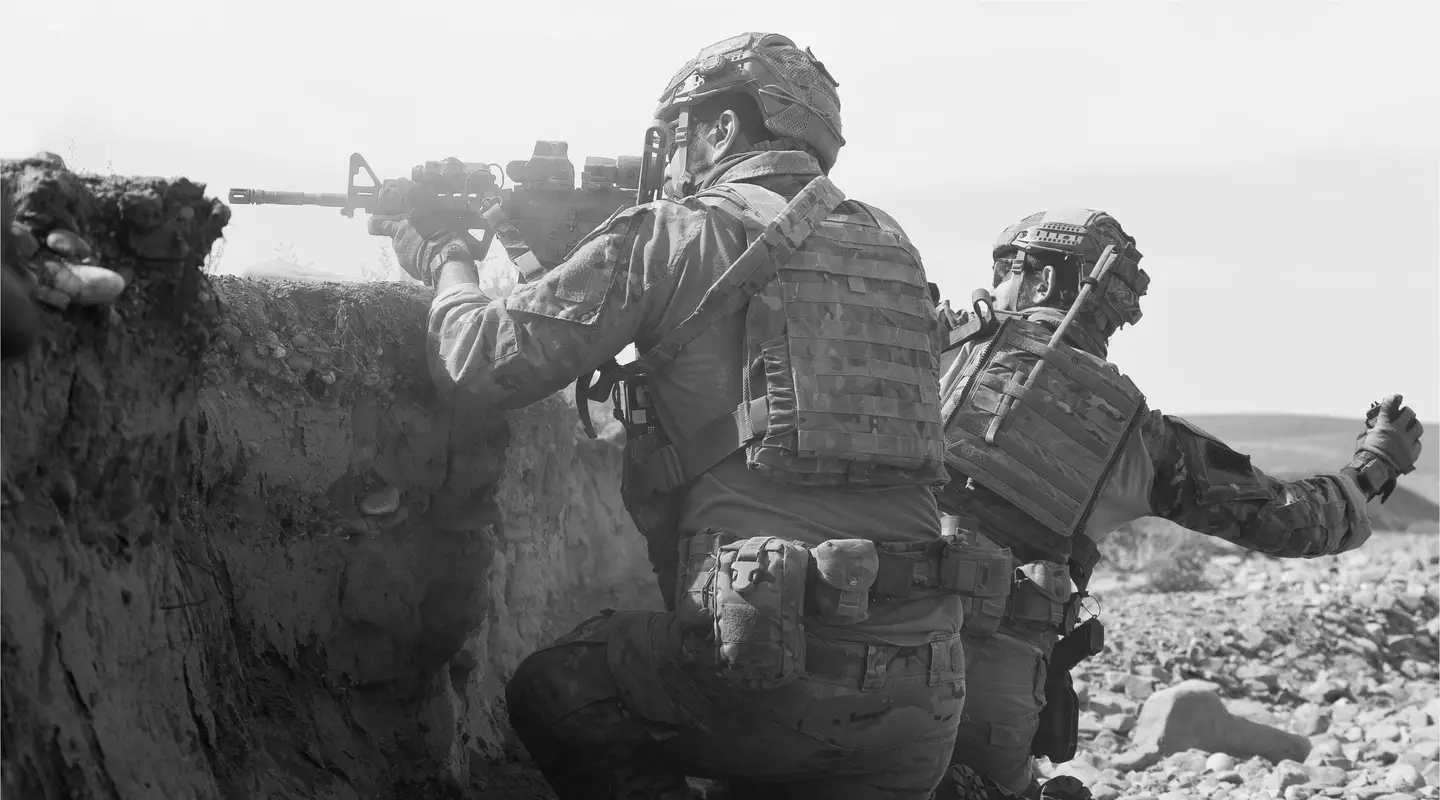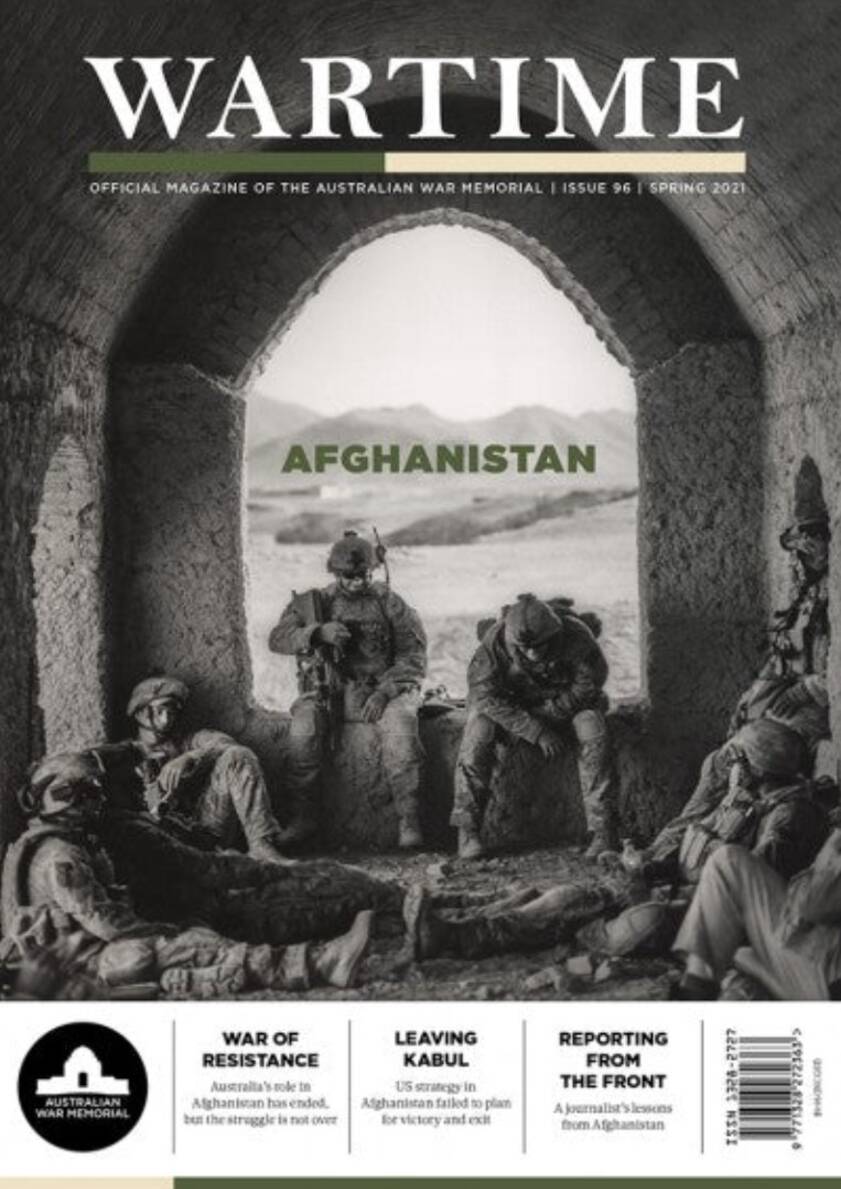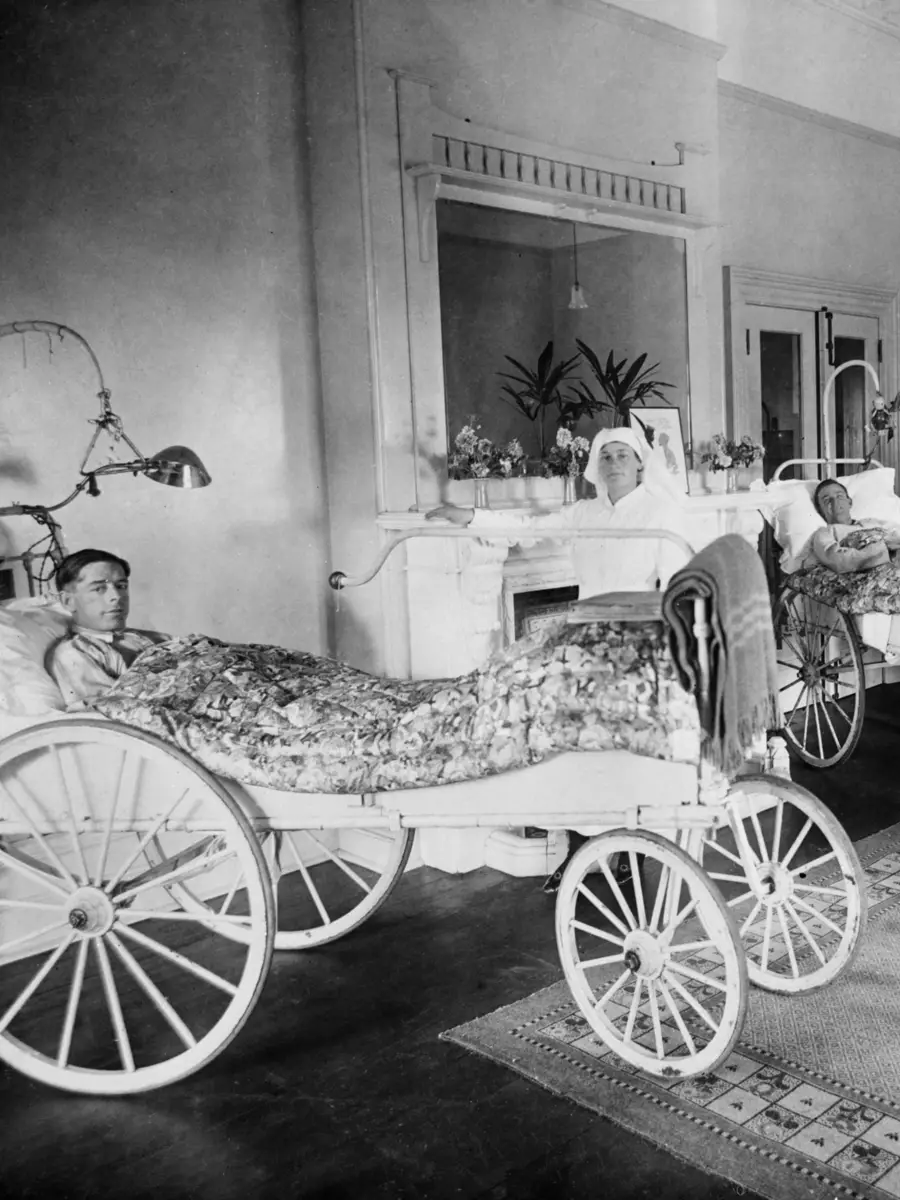The health costs of the war in Afghanistan raise unanswered questions that need continued research.
There are individual truths and national truths about the past. This is particularly the case with war. The role of history and remembrance is to capture this spectrum of perspectives. One of the challenges is to reconcile these disparate accounts of combat between the broad national narrative and that of the individual participant. This enduring struggle in the aftermath of war was reflected by First World War veteran Erich Maria Remarque, the author of All Quiet on the Western Front: “Because one thing has become clear to me: you can cope with all the horror as long as you simply duck thinking about it – but it will kill you if you try to come to terms with it.”
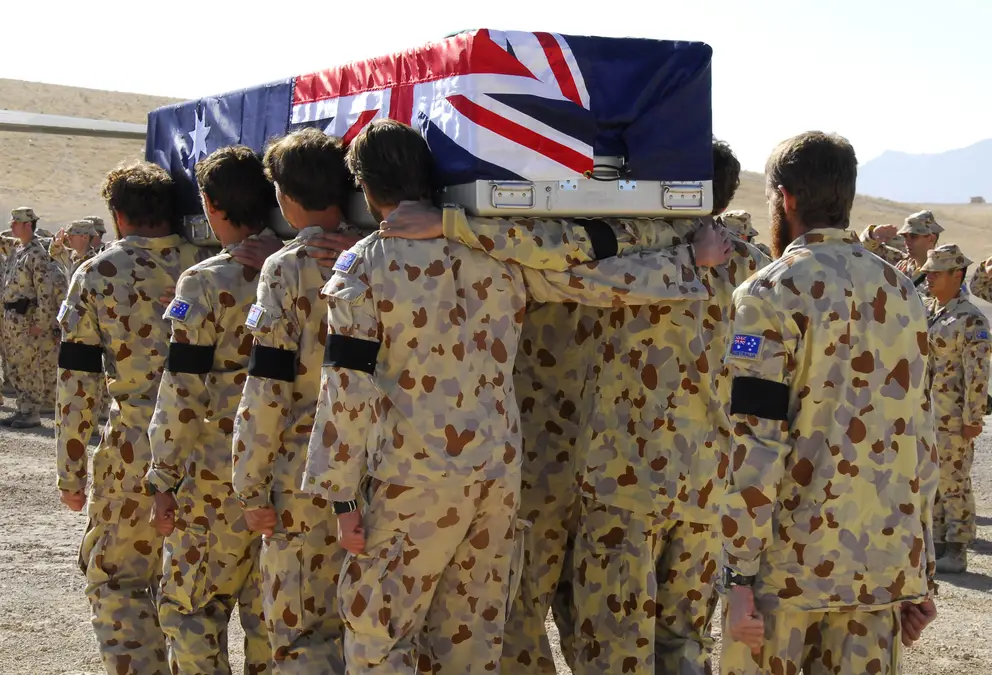
Australian soldiers farewell their comrade, Private Luke Worsley, after his death in action in Afghanistan, November 2017. Photographer: Captain Al Green. Courtesy of Defence.
The mental health impacts of war are often the consequence of this process of reflection and change with the passage of time. The duration and complexity of Australia’s deployments to Afghanistan are no exception. When a soldier returns from war, there is the requirement to transition to civilian life and the world of intimate interpersonal relationships. This world is one of different values, motivations and culture; it requires an individual to be more attuned to the emotional needs of others with whom they are connected. This requires the individual to be more reflective in their interactions and day-to-day actions and choices. It also brings veterans closer to their contemplative self. This shift, in turn, brings to the forefront of the mind the revisitation of their war memories that have been kept at a distance.
Because one thing has become clear to me: you can cope with all the horror as long as you simply duck thinking about it – but it will kill you if you try to come to terms with it.
All Quiet on the Western Front
In the combat environment, an individual often lives in “survival mode”. This involves the constriction of the attention that the individual pays to others, with an intense focus on actions and plans that optimise survival. This is a state of focusing outwards to threats in the environment and how they are to be managed. Military training desensitises individuals to their own internal emotional world, and states such as fear have to be mastered and contained in potentially life-threatening situations. As a consequence, the impact of war is not seen in the immediate aftermath, because there is a delay in the emergence of war’s consequences for the person’s physical and mental health. It is not surprising that the lasting impacts of war on the individuals who fought are an issue of national importance. This is mirrored in the announcement of the Royal Commission into Defence and Veteran Suicide. The evidence put to the Commission will be driven by multiple interests and perspectives about how to reflect on war’s impact one’s health. So it is important to consider what we already know and what will frame our historical recollection of the war in Afghanistan.
Overseas responses
A recent historical analysis by US historian David Kieran, Signature Wounds, examines the way the media, popular culture, and political rhetoric about the mental health impacts of the wars in Iraq and Afghanistan have interacted and affected people. He says that the US political establishment underestimated the mental health costs of the Middle East Area of Operations, and the US military was underprepared to manage the mental health consequences. In turn, the psychological costs to US veterans have been used by the Democratic party to critique the Republican party's conduct of the war. The criticism of the Republican administration characterised the war as “misbegotten and mismanaged by a callous administration unwilling to acknowledge or address the human consequence of its misguided policies.” Such a critique means that the mental health consequences of war are not neutral political territory; this poses a challenge to veterans, government, scholars, and health professionals alike to ensure reasoned debate.
The Royal Commission into Defence and Veteran Suicide reflects the Australian community’s preoccupation with these concerns and issues. We need to be aware of how the Australian community’s perspectives have been primed and influenced by the debates in the US. Therefore, it is important to examine the similarities and differences between the two allies in their responses to these events.
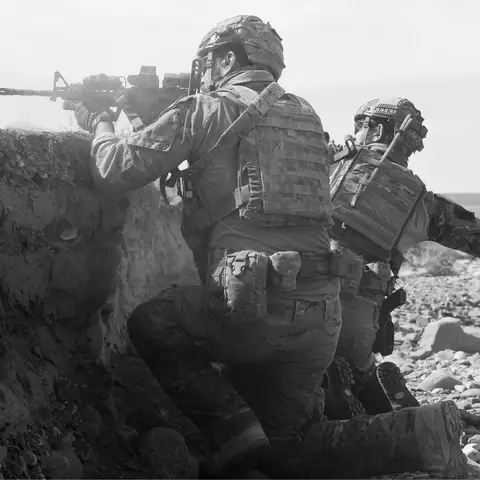
Australian Army soldiers from Special Operations Task Group conduct a range practise in Uruzgan province, southern Afghanistan, in 2012. Courtesy of Defence.
The US Army and the National Institute of Mental Health mandated a very substantial research program to address these issues, beginning in 2008. The program’s longitudinal studies followed a series of high-impact publications about the worrying rates of PTSD in US veterans that were revealed in post-operational mental health screens. Those studies also critiqued the effectiveness of the management of these mental health disorders by the Veterans Affairs Health system. Mild traumatic brain injury has become a touchstone injury for the veterans community, and a similarly comprehensive research endeavour has been undertaken to investigate the consequences of exposure to explosive blasts. A spike in the number of suicides on deployment in 2003 and 2005 also made suicide a matter of national focus, which led to the establishment of the Army Study to Assess Risk and Resilience in Servicemembers (Army STARRS) research program to better document risk factors and outcomes.
In contrast, the UK published a series of academic papers by the King’s Centre for Military Health Research in which some publications appeared to play down the costs of deployment. For example, the group published a paper titled “Going to war does not have to hurt”. These differences of approach led to a controversy between theAmerican and British military psychiatric communities. The UK had started from a different base, and historically had been suspicious of the American readiness to embrace post-traumatic stress disorder as a psychiatric diagnosis. This difference was largely driven by the fact that the UK had not had to deal with the psychological scars that framed the aftermath of the Vietnam War. British historian Ben Shephard notes the suspicions in the UK that PTSD was a construct driven by political and social agendas. The Ministry of Defence (MOD) in the UK was sued in 2001 by in a class action by a group of Falklands, Gulf War and Northern Ireland veterans regarding the MOD’s failure in its duty of care for the casualties of combat stress. The veterans lost their case, and this emboldened resistance in the UK towards taking a more comprehensive view of the need for military mental health care. This is partly reflected in the absence of a veteran's health system in the UK in contrast to the US, Australia and Canada.
Australian experience
It is important to be aware of how these international debates have influenced the Australian approach to addressing the psychological casualties of our Afghanistan deployments. However, there have also been some unique factors at play that have influenced our readiness to address the mental health of ADF veterans. First, the Evatt Royal Commission into the effects of Agent Orange formed a basis for the acceptance of PTSD by the DVA health system in Australia. This commission was followed by the establishment of the Vietnam Veterans Counselling Service (now called Open Arms); in contrast to the situation in Britain, PTSD was core business for military psychiatry.
Secondly, the mental health impact of Operation Tamar, the ADF’s deployment to Rwanda, and its exposure to the appalling Kibeho massacre, was an important turning point. Many of the ADF’s medical personnel were affected by that horrific incident. Their personal insights led to their supporting improvement in the mental health care of ADF personnel, and a number of those people reached senior postings in Joint Health Command. These changes addressed the way in which the quality of mental health services in the ADF had gone into decline during a long period of low operational tempo since the Vietnam War.
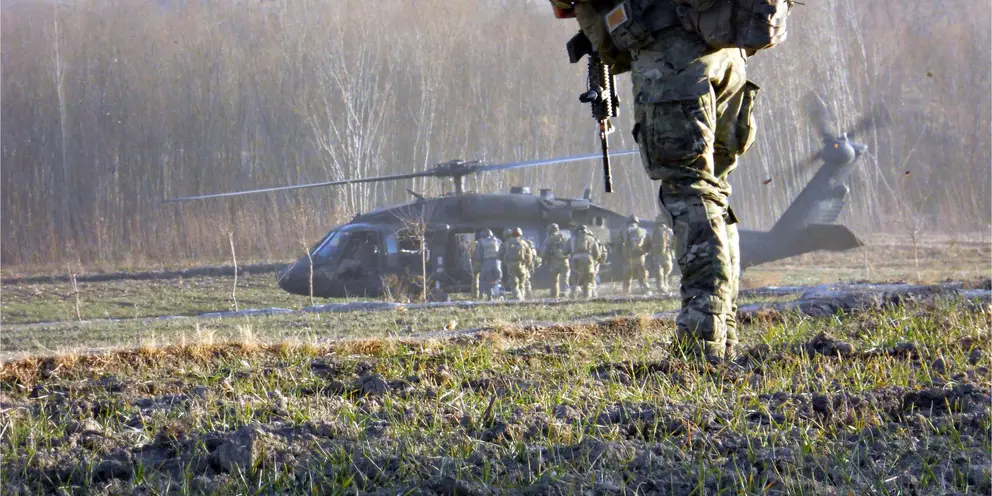
A Special Forces Reservist watches his colleagues enter a Blackhawk in Uruzgan c. 2010. Courtesy of Defence.
The third difference in the Australian context was the controversy about Gulf War illness in Australian veterans who had fought to displace Saddam Hussein's Iraqi occupation forces from Kuwait. A large study was commissioned by DVA to explore the health of those who had deployed, contrasted to a group who could have deployed but did not go to the Persian Gulf. At the beginning of the war, there were ten ships which could have been deployed to the Gulf War, and five were sent.
This study identified an important methodological challenge in measuring hazardous and traumatic exposures. The veterans who reported more health complaints also reported higher levels of such exposures than other personnel on the same ship whose health had not been adversely impacted. In reality all personnel on each ship had experienced the same level of risk from mines and the threat of enemy fire. These differences in reported levels of threat (both actual and perceived) were attributed to the ten-year delay in recording the exposure data. This pattern of difference probably arose due to some reporting bias that was related to the person’s current symptoms. Those who were not suffering any adverse health outcomes may simply have forgotten, in the intervening ten years, the level of threat they had experienced on deployment. This finding highlighted the need to measure combat exposure close to the time of deployment in order for the measurement to be accurate.
With the 1998 East Timor deployments, the government realised the importance of developing a way of monitoring the health of the troops. The Deployment Health Surveillance Program (DHSP) was established when it was recognised that the health symptoms experienced by Gulf War veterans (as a consequence of their traumatic events and hazardous exposures while on deployment) needed to be documented nearer in time to the war. This awareness led to the collection of base-line exposure and health data for all deployments after 2002. Australia was well placed, in contrast to our allies, to objectively document the impact of the Afghanistan war.
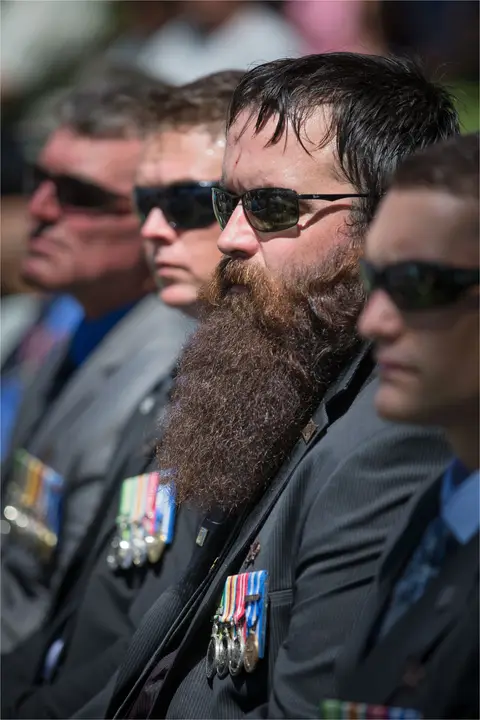
Veterans of Operation SLIPPER watch a memorial service in Townsville, QLD in 2015. Photographer: Kyle Genner. Courtesy of Defence.
The former servicepeople were then to be followed up over a long term to determine the health consequences. The Centre for Military Veterans Health (CMVH) was, in part, established to run this program.
The 2010 ADF Mental Health Prevalence and Well-Being Study examined the entire ADF, and included an investigation of all 26,915 veterans who had deployed to Iraq and/or to Afghanistan.
The aim was to document the current health of this cohort in the context of their deployment exposures, and then to track the health of these veterans into the future by further waves of data collection.
This study demonstrated that 38% of those who had deployed to Afghanistan had also deployed to Iraq, so that it was difficult to isolate the impacts of each of these deployments. There was substantially greater exposure to combat in Afghanistan. A further smaller cohort of 1,324 personnel were recruited and underwent an extensive evaluation before and after their deployments.
Despite the CMVH funding being terminated, components of this longitudinal research program were continued by the Centre for Traumatic Stress Studies at the University of Adelaide through the Transition and Well-being Research Program.
The Department of Veterans’ Affairs allowed the funding for the DHSP to lapse with the completion of the Middle East Area of Operations studies. No explanation was given.
As a consequence, the data was never fully analysed, reported or utilised by the ADF and DVA. For example, many of those who deployed to Afghanistan had deployed to East Timor, Bougainville or Solomon Islands – deployments that had also been part of the DHSP. The long-term health consequences of the operational tempo of the ADF from 1998 to the present are a critical unanswered question about the mental health impact of the Afghanistan conflict. This question could be answered, using these linked data sets; that was the purpose of the original study design. The research records from these studies are an invaluable historical record of both the individual and the aggregated experiences of ADF personnel from 2000 to 2015. Their preservation is a priority for future study.
Comparing traumas
Against this background, the challenge of documenting the long-term effects of the Afghanistan wars is a complex task and needs to be considered against the broader issue of what is known about the mental health of the ADF. The 2010 ADF Mental Health Prevalence and Wellbeing Study used a methodology similar to the 2007 National Mental Health and Wellbeing Study, allowing the mental health of ADF personnel to be compared with the Australian community. In 2010, 22% of ADF personnel had experienced a psychiatric disorder in the previous 12 months, which was the same as a matched cohort in the Australian community. A critical issue in the interpretation of these findings, however, is that the ADF is a highly selected workforce with low rates of mental disorders at the time of recruitment, and therefore should be healthier than the Australian community from which they are recruited
Contrary to expectation, the 2010 ADF’s Mental Health Prevalence and Wellbeing Study found there were few differences in the mental health of those who had deployed and those who had not deployed to the Middle East. This suggested there was only a minimal impact of deployment. Why was this the case, when later studies show there is a significant impact of deployment? First, detailed analysis found that those who had deployed were different on a range of characteristics from those who had not deployed. They were older, or they were non-commissioned officers; they were more likely to be married/partnered, and were in better health. These demographic differences suggested a ‘healthy worker effect’ was at play that could explain the lack of an effect from deployment on mental disorders in the group. Furthermore, the deployed group also had lower rates of accidents than among non-deployed personnel; that is, they were less traumatised.
However, these findings were about currently serving personnel; the findings did not include all those who could be suffering as a consequence of deployments, particularly those veterans who had discharged. Those who were wounded, or had psychological injuries due to their deployment in Afghanistan, were more likely to have been medically discharged, and hence their mental disorders were not recorded. Also, there is significant evidence about the delayed emergence of PTSD; long-term follow-up is required to demonstrate the full effect of the Afghanistan war on the mental health of ADF veterans. Data collected soon after deployments does not demonstrate the long-term costs. Long-term research is critical, but there is no plan to conduct this follow-up at present, despite this being the original intent of the DHSP.
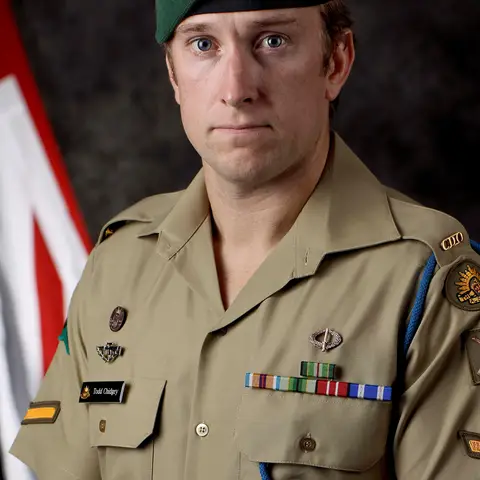
Lance Corporal Todd Chidgey died in a non-combat related incident in Afghanistan on 1 July 2014. Courtesy of Defence.

Lance Corporal Todd Chidgey's mother Kerry Baker and brother Adam Chidgey at the Roll of Honour at the Australian War Memorial after the unveiling of Todd's name in November 2014. Courtesy of Defence.
The longer-term impacts of the Afghanistan deployments were, in part, addressed in the 2015 Transition and Wellbeing Study. This confirmed that ADF members who have been on an operational deployment, such as to Afghanistan, and who have a mental disorder, were more likely to transition out of Defence. When the transition group from this cohort were examined, 50% had experienced a psychiatric disorder in the preceding 12 months, compared with 22% of those who had remained in the ADF. This highlights how the burden of deployments such as Afghanistan is more apparent in discharged veterans. Personnel who had transitioned also showed greater severity of current psychological distress: depression anxiety, anger, suicidality and alcohol use.
Transitioned ADF personnel who had been on an operational deployment, such as in Afghanistan, were more likely to have an anxiety disorder (obsessive-compulsive disorder and PTSD), compared with those who had never deployed. More detailed analyses were conducted in the smaller cohort who were studied pre- and post-deployment. In this cohort, studied in 2010–11, those veterans who had prior deployments had a greater likelihood of elevated symptoms when they were contacted again in 2015. There were higher levels of symptoms in veterans with more previous deployments, which highlighted the cumulative burden of multiple deployments. Similarly, those who had high or very high levels of trauma exposure on deployment in Afghanistan were three times more likely to have elevated psychological distress in 2015, compared with those who had only low exposures. These effects are likely to have further increased with time due to the emergence of delayed-onset PTSD.
A final issue that should be considered about Australia's involvement in the Afghanistan war is the findings of the recent Afghanistan report by the Inspector-General of the ADF (commonly known as the Brereton Report), which alleged war crimes by Special Forces personnel. This should not be a surprise, as the impacts of repeated deployments on mental health have been known since the Vietnam War, and losing control of anger has been clearly documented. A further complication is that exposure to the types of situations that are the subject of these allegations represents a particular risk of adverse mental health outcomes – both for witnesses, and in those who have been alleged to have participated in these offences.
The future
Much is still to unfold about the mental impact of the deployments in Afghanistan, and this requires careful ongoing documentation and research. Such epidemiological research does not have the same vividness as personal accounts of the mental scars of war. These will emerge in the upcoming Royal Commission. However, this research is critical to improving health care for veterans, and to document the causes and costs of war so that preventive strategies can be developed.
With the withdrawal of Australian troops from Afghanistan, Australia’s physical involvement in this conflict has come to an end. However, future consideration of the impact on the mental health of those who participated is not without its challenges. As Remarque reflected: “One thing I do know: everything that is sinking into us like a stone now, while we are in the war, will rise up again when the war is over, and that’s when the real life-and-death struggle will start.”
This dilemma is faced not only by the combatant and his/her family, and it will further impact on their mental health. Reflection can also impact on those in command, the Australian Defence Force as an institution, and the politicians who chose to send Australian Defence Force personnel to this conflict. Traumatic memories of war will drive the long-term mental health consequences of the war in Afghanistan, and this reality is yet to be fully uncovered. How we meet this challenge is a measure of national character.
